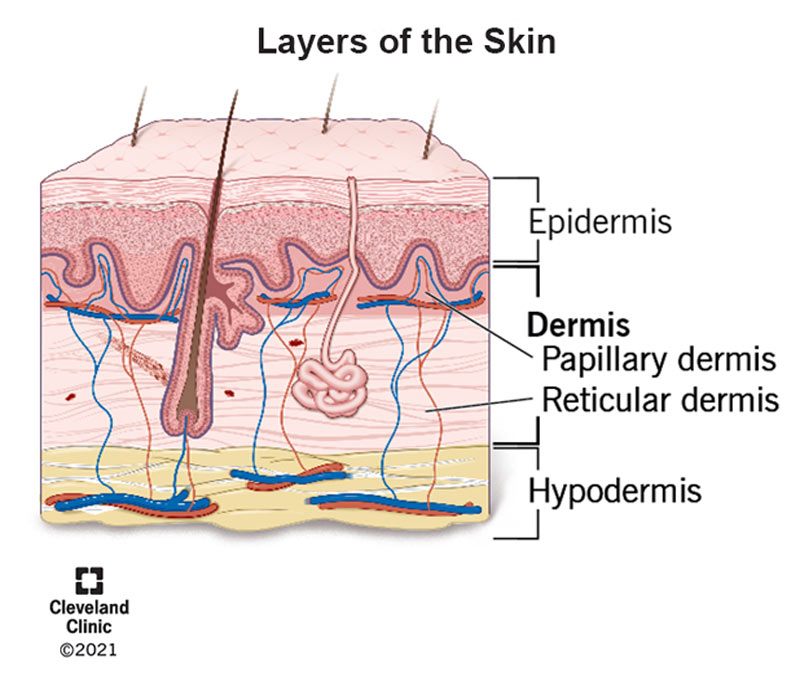Your dermis is the middle layer of skin in your body. It has many different purposes, including protecting your body from harm, supporting your epidermis, feeling different sensations and producing sweat and hair.
Advertisement
Cleveland Clinic is a non-profit academic medical center. Advertising on our site helps support our mission. We do not endorse non-Cleveland Clinic products or services. Policy

Your skin has three main layers, and the dermis (corium) is the middle layer of skin in your body. The other two layers of skin are your epidermis and hypodermis. Your dermis layer consists of two layers of its own.
Advertisement
Cleveland Clinic is a non-profit academic medical center. Advertising on our site helps support our mission. We do not endorse non-Cleveland Clinic products or services. Policy
Corium is another name for the dermis. Corium is a Latin word that means “leather” or “skin.”
Your dermis consists of two layers:
Your dermis and your epidermis are the top two layers of skin in your body. Your epidermis is the top layer, and your dermis is the middle layer. Your dermis exists between your epidermis and hypodermis.
Your epidermis is the thinnest layer of skin. It helps hydrate your body, produces new skin cells, protects your body from damage and makes melanin, which provides skin color.
Advertisement
While your epidermis is the thinnest layer of skin, your dermis is the thickest layer of skin. Your dermis contains collagen and elastin, which help make your dermis thick and supportive of your skin’s overall structure.
All of your connective tissues, nerve endings, sweat glands, oil glands and hair follicles exist in your dermis.
Each layer of your skin works together to protect your body. Your dermis has many additional functions, including:
Together with your other layers of skin, your dermis protects your skeletal system, organs, muscles and tissues from harm.
Your dermis is the middle layer of your skin, located between your epidermis (top layer) and hypodermis (bottom layer) in your skin.
Your dermis consists of two layers — the reticular dermis and the papillary dermis.
Your dermis varies in thickness across your body. It’s thinnest over your eyelids, where it’s 0.6 millimeters thick, and it’s thickest over your back, where it’s 4 millimeters thick.
Your dermis contains tissues with a lot of blood vessels that also include:
Some conditions and disorders that affect your dermis include:
Some common signs or symptoms of conditions that can affect your dermis include:
Advertisement
Some common treatments for conditions that affect your dermis include:
The following lifestyle tips help keep your dermis healthy:
Advertisement
Your dermis is the middle layer of skin in your body. It has many important functions, including protecting your body from the outside world, supporting your epidermis, feeling different sensations and producing sweat. It’s important to take care of your dermis. You can help take care of your dermis by drinking plenty of water, properly treating your wounds and avoiding sun damage.
Advertisement
Cleveland Clinic’s primary care providers offer lifelong medical care. From sinus infections and high blood pressure to preventive screening, we’re here for you.

Last reviewed on 02/07/2022.
Learn more about the Health Library and our editorial process.